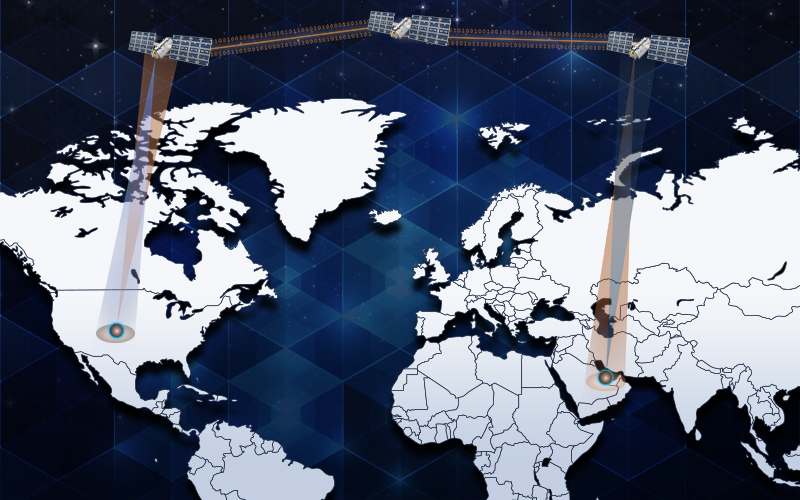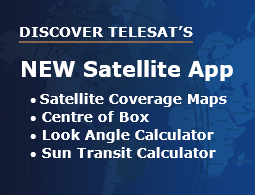Satellite gateways are an essential part of any satellite network. Often, the space-based components of the network get the bulk of the attention, but gateways are literally where the “rubber hits the road.” In this case, the data hits the terrestrial network and is sent to the user.
In the past, when government users purchased capacity from a commercial SATCOM provider, they typically leveraged that provider’s gateway. More recently, there has been increased focus on the gateway’s security and flexibility. Government users can leverage their own gateways or take advantage of new commercial options that approach the security of dedicated military satellite systems.
For example, a recent Defense One article detailed the Defense Information Systems Agency’s (DISA) interest in proliferated Low-Earth Orbit (PLEO) networks. PLEO can deliver the resiliency and redundancy DISA requires, but there is concern about how this data would connect back to DISA.
The article discusses today’s LEO networks and how to get data from those networks into the Defense Information Systems Network (DISN). Army Col. Jeff Strauss, DISA’s deputy for acquisitions stated, “There’s risks there today. You gotta come in through the dirty internet.”
Telesat is addressing such security concerns head-on. We’re building Telesat Lightspeed, a global broadband LEO constellation, to deliver high data rate enterprise-class communications. Telesat Lightspeed was designed for resilient, mission-critical enterprise services, supporting the telecom networks that form the technological backbone of our modern society. By being so resilient, the system will also provide several capabilities governments require from their secure, dedicated military systems.
Each Telesat Lightspeed satellite has four 10 Gbps optical inter-satellite links (OISLs) that interconnect the constellation with laser communications, forming a secure, global Layer 2 mesh network in space. The satellites have onboard digital signal processing with satellite-to-satellite and satellite-to-ground data routing that supports traffic flows from any user terminal to and from any destination on Earth.
Telesat Lightspeed is deploying Aalyria’s Spacetime, a next-generation networking software, to organize the efficient flow of customer traffic over the constellation. Spacetime is an advanced software platform that will leverage machine learning and artificial intelligence (AI). The topology of LEO networks is dynamic due to the constant movement of satellites over the earth to maintain their low-altitude orbits. Efficient network orchestration is critical for delivering the highest quality of service and meeting service commitments on availability, latency, data rates, and jitter to customers.
Telesat’s system architecture and cybersecurity measures established for Telesat Lightspeed present compelling capabilities for government users. Telesat has adopted the National Institute of Standards and Technology (NIST) Cybersecurity Framework and expects to achieve high cybersecurity classification under the U.S. Space Force Infrastructure Asset Pre-Assessment Program (IA-Pre) and Transmission security (TRANSEC) Some protection elements include:
- Cover: Telesat Lightspeed supports the use of user Layer 2 encryption approaches, including NSA-certified Ethernet Data Encryption.
- Traffic flow security: The Telesat Lightspeed network will include specific features that improve traffic flow security, such as masking channel activity.
- Low probability of positioning: The Telesat Lightspeed LEO architecture is designed to protect information about customer terminal locations from unauthorized persons.
- Low probability of intercept: The architecture makes it significantly more difficult to intercept communications than legacy GEO SATCOM solutions. Telesat employs isolated, small, rapidly hopping spot beams; these small beams, coupled with multi-satellite access, time-domain access, frequency-hopping connections, and the inherent motion of the LEO satellites, significantly increase the complexity of intercepting a wanted signal.
- Jam resistance: Telesat Lightspeed is resilient against jamming attempts because an interferer needs a tracking antenna to follow Telesat Lightspeed LEO satellites, obtain perishable data on specific (narrow) beam usage, and use specific satellite orbital position data. Small beam sizes on Telesat Lightspeed complicate an adversary’s ability to interfere within a specific beam as the jammer must also be located within the narrow beam coverage area.
- Forward error correction: Telesat Lightspeed radiofrequency transmissions include FEC coding to improve customer cybersecurity.
How to eliminate the ‘dirty internet’
This new level of commercial SATCOM security can be maintained from end-to-end. If required, a customer’s data can remain entirely within the Telesat Lightspeed constellation from source to destination, never transiting a public network, and therefore inaccessible to an adversary who wants to monitor or exploit the data stream. We call this a Private Access Station. It delivers the functionality of a government-owned gateway, in that the data never touches a third-party terrestrial network. The customer also retains total control of the data encryption and decryption process for their data sent over the Telesat Lightspeed network.
With Telesat Lightspeed, the “bent pipe” transport of legacy satellite networks is a thing of the past. Telesat Lightspeed can receive data from a user terminal at any point on Earth, connect across OISLs from satellite to satellite, and downlink that data directly to a user terminal anywhere on Earth.
When considering the best non-geostationary orbit (NGSO) system for government use, LEO offers significant advantages over medium-earth-orbit (MEO) and GEO networks. These include lower latency, higher resiliency due to multiple satellites in constant view, and ubiquitous coverage. The terminals used for LEO private gateways are also smaller and less costly than MEO tracking gateway terminals.
Security concerns are increasing as space becomes more contested every year. With a Telesat Lightspeed Private Access station, government users have a NGSO option that provides the total control of a government gateway while being scalable, flexible, and secure from end-to-end. It’s a new level of functionality for a new kind of LEO satellite constellation.




